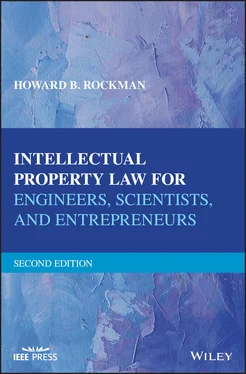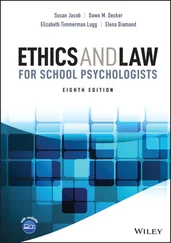Also, determine whether or not there has been a public disclosure or public knowledge of the invention less than a year before the date of the invention disclosure meeting, since it is important to know whether foreign patent rights have been affected by such disclosure. It is also important to know when the 1‐year U.S. “statutory bar” will be effective due to a public disclosure of the invention, to enable a patent application to be filed before the 1 year bar date.
In making your disclosure to the patent attorney, it is important to indicate what acts took place and what facts surround the circumstances relating to any prior disclosure of your invention that was made to others, either prior to a year or within a year of the invention disclosure meeting. It's possible that the public disclosures you made were only of an experimental version of your invention, and therefore did not comprise disclosure of a complete invention such as will destroy patent rights. If there has been no prior public disclosure of the invention, the patent attorney will most assuredly advise you to refrain from disclosing, publicly using, selling, or offering to sell the invention prior to the date the patent application is actually lodged with the U.S. Patent & Trademark Office. The potential adverse effects of such public disclosures on patent rights need not be repeated.
You must also disclose to the patent attorney how you gained knowledge of the concept of your invention. Obviously, if you derived the invention from a showing of the same invention from another source, you are not the first inventor and cannot obtain a patent. Also, an applicant cannot discover an invention in another country and apply for a patent in the United States, since the applicant cannot comply with that portion of the statute requiring that the inventor certify that he or she is the original and first inventor.
Since “experimental use” is not a public use of a complete invention and therefore is not a bar to obtaining a U.S. patent, when meeting with the patent attorney for the first time, the inventor should, in describing all outside uses and showings of the invention to others, present sufficient facts to enable the patent attorney to determine whether or not such use could be classified as “experimental” or not. Thus, even though you may have previously exposed a portion of the subject of the invention to third parties, the attorney may advise you that this is not necessarily a bar to patentability. Also, it is important to advise the attorney of any prior publication(s) by the inventor or inventors to determine when and which features of the invention were disclosed, and which were not disclosed in such prior publications. Non‐disclosed features can still form the subject matter of a patent application. Keep in mind also that disclosures to others made under the aegis of a signed NDA are not “public” disclosures, and are not a bar to obtaining a patent.
7.3.4 Advantages of the Invention Over Known Devices/Processes
After disclosing to the patent professional your information about the structure, operation/function, and results achieved by your invention, it is important to disclose to the patent professional the advantages of your invention, and how those advantages are realized from the structure of the invention, the operation or function of that structure, and the results achieved by the operation and/or function of that structure. In other words, what structure and/or function of the invention produces the advantages over the prior art. The advantages should be expressed both in broad terms and in more limited terms. These advantages provide the “selling points” for persuading the Patent Examiner that the invention is indeed a step forward in the useful arts. Such advantages also may assist in defining the “contribution” to the advance in the art that this particular invention offers to the public. More importantly, I have personally noticed that the courts tend to rely upon the advantages of the invention and the contribution of the inventor to an advance in the art to support their decisions upholding patentability. If the patent attorney at the initial meeting does not ask you what advantages are provided by the invention, tell him or her anyway. In my view, this is most important.
7.3.5 What Prior Art the Inventor is Aware of for Disclosure to the Patent Examiner
During the first meeting with your patent professional regarding an invention, the patent professional will prudently ask you to disclose to her or him all information you are aware of regarding the state of the prior art relating to the subject matter of your invention. This involves disclosure to the patent attorney of your knowledge of printed or electronic publications, similar devices already existing in the market, issued patents, and any other prior acts or materials of either the inventor(s) themselves or others that may relate to the subject matter of the invention. The reason is that Rule 56 of the USPTO Rules (37 C.F.R. §1.56) requires that an inventor and the inventor’s attorney or agent disclose “information they are aware of which is material to the examination of the application” to the Patent Examiner prior to the commencement of examination, and during the entire time of the examination process. The determination of whether such prior art would be material to examination depends upon whether that prior art would be considered by the Examiner as information which is material to patentability in deciding whether or not to issue the patent. Normally, an Information Disclosure Statement is submitted to the Patent Examiner at the time of filing the application, setting forth all prior art that the inventor and the attorney are aware of that is material to examination of the application. This would include all prior art that was uncovered by a pre‐filing patentability search.
In my judgment, the purpose of the prior art disclosure rule is twofold. First, the applicant and the attorney are legally held to a strict duty of candor in making a showing before the USPTO of the reasons they believe the inventor is the first inventor. It is no longer possible to attempt to hide prior art that you are aware of from the Examiner, and obtain issuance of a patent upon the theory that the Examiner will never find that information. In this regard, the disclosure to the Examiner must also include any activities of the inventors themselves which are material to consideration as possible statutory bars for granting a patent, such as public uses, offers for sale or sales, or public knowledge prior to your patent application filing date, as explained previously. By way of example, an explanation of the inventor’s activities relating to the invention that transpired more than 1 year prior to the filing date, which activities could or could not be considered as public disclosures, should be presented to the Examiner, along with an explanation as to why such activities were only experimental or test activities and do not give rise to a disabling “public use,” “on sale,” or “publicly available” situation.
The second reason for submitting this prior art to the USPTO is that the patent application is prepared with a view toward ultimately being enforced, if necessary, before a federal court, explaining to the court every step taken in developing the invention and obtaining patent protection. In patent litigation, the lawyer representing the alleged infringer will introduce into evidence all prior art believed to be relevant in an effort to invalidate your patent by showing that your patent should not have issued in the first place. However, under existing law governing patent litigation, the court can give short shrift or completely ignore prior art that was previously considered by the Patent Examiner during the examination process, if such prior art is presented as part of an invalidity defense in court by the alleged infringer. In simple terms, the court is asking defense counsel to present prior art that was not previously considered by the Patent Examiner. Therefore, the more prior art you present to the Examiner and introduce into the history of the examination of the patent application, the more difficult it becomes for a lawyer representing an infringer to obtain additional prior art material in an effort to invalidate the patent. Thus, in my opinion, it is definitely to the inventor’s advantage to have as much prior art as possible presented in the USPTO examination and prosecution history and reviewed by the Examiner, as a way of strengthening the patent if and when that patent faces enforcement in a court proceeding.
Читать дальше












